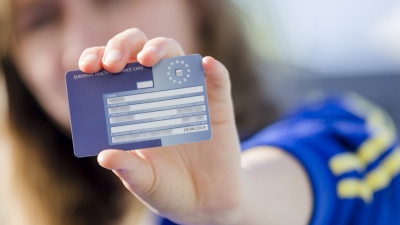
American motorists were able to buy petrol with oil company credit cards before the First World War, but the age of the credit card dawned in 1950 with the introduction of the Diners Club charge card by American businessman Frank McNamara. The idea came to him after dining in a New York restaurant and discovering he had mislaid his wallet. The Diners Club card is not strictly a credit card because the whole bill has to be paid when the invoice is received — most other cards carry forward a debit balance.
Today there are more than 350 million credit or charge cards in use in the United States alone. Worldwide, cards are numbered in billions.
Smart cards are likely to have a wider use than for money transactions. in the late 1980s some medical authorities in parts of Europe, the USA and Japan began trials with medical identity cards —smart cards carrying the holder’s medical history. The cards save time and paperwork, as they can be consulted by doctors and chemists in computer terminals at hospitals, surgeries and pharmacies, and updated each time the patient is seen. The European trial programmes aim to produce a standardized EEC care or health smart card for use in the 1990s.
Also available are laser cards, developed in the USA, in California. They are not as smart as smart cards, but are able to carry a much larger store of personal information, contained in a pattern of tiny holes — only a thousandth of a millimetre across — on a photosensitive strip. The dots, like the pits and flats on a compact disc, can he read by a laser scanner in a special terminal.
The card can hold coded identification details, including fingerprints, signature, voice print, and even a photograph,’ as well as various hidden security codes making it -virtually impossible to counterfeit Its information storage space is so vast there is plenty room for such things as bank accounts, medical history and educational attainments. Information is filed on the card under separate access codes, so the bank, for example, could read out only financial information and the doctor only medical information.
Picture Credit : Google

